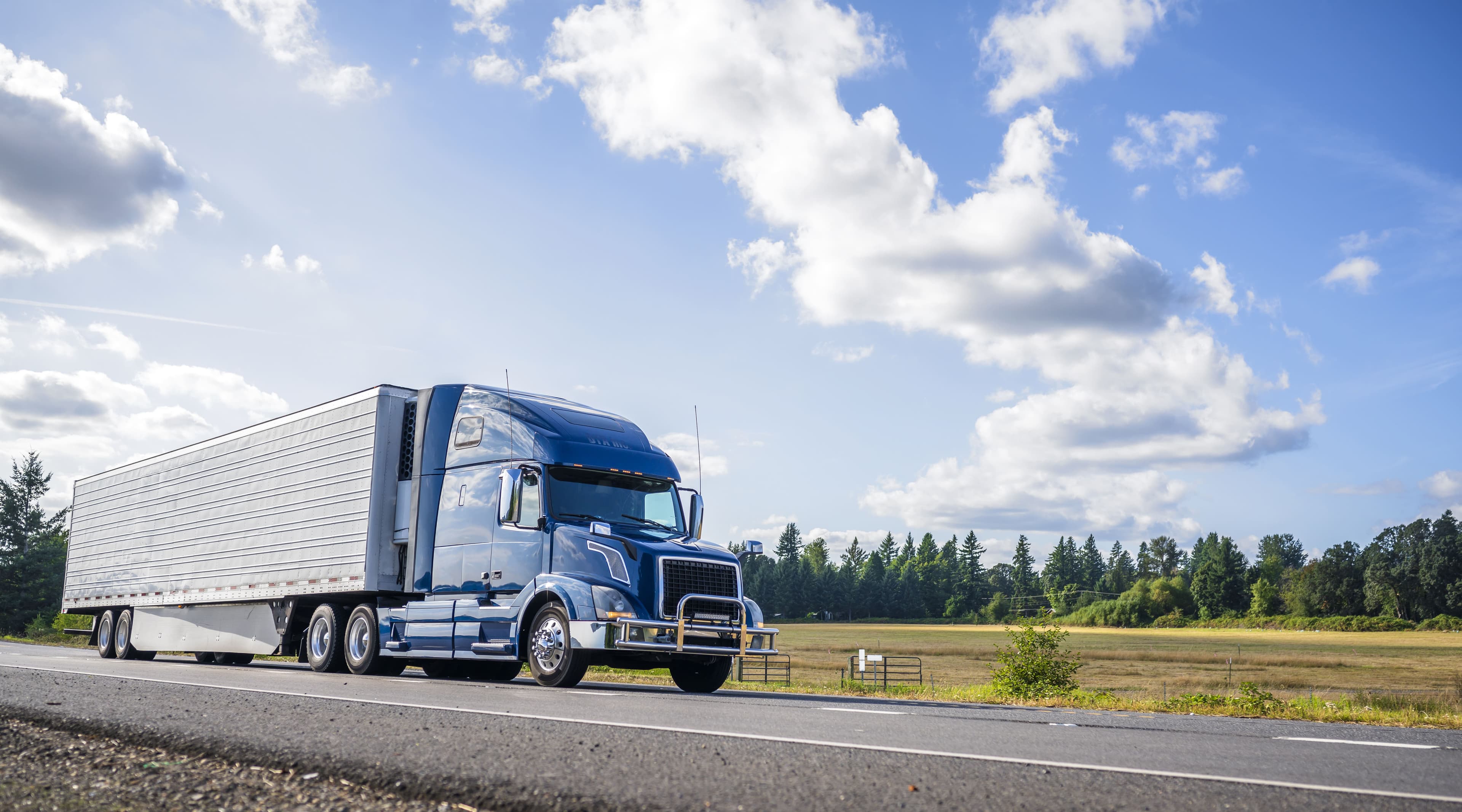Understand the Benefits and Differences of CNG and RNG

Trending
Top Posts
Transportation Strategy
What is a Transportation Management System?
4 min read
March 27, 2025
Market Events
A Comprehensive Guide to Federal Policy Updates and Their Impacts on the Transportation Industry
10 min read
March 26, 2025
Market Events
Diesel Fuel Price Trends to Watch for the Remainder of 2025
5 min read
March 25, 2025

7 min read
June 26, 2024

Share:
As policymakers and stakeholders shift focus to the transportation sector for emissions reduction opportunities, newer fuels and technologies are emerging. Heavy-duty electric vehicles (HDEVs) and heavy-duty fuel cell electric vehicles (HDFCEVs) are becoming viable alternative fuel sources. Both electric and hydrogen are often grouped together as zero emission vehicles (ZEVs) because they have zero tailpipe emissions. However, their overall lifecycle emissions differ based on production methods.
HDEVs and HDFCEVs present numerous opportunities and challenges for the transportation sector.
Electric heavy-duty vehicles are more advanced than fuel cell electric vehicles due to extensive development in passenger EVs. HDEVs offer greater freight efficiency and sustainability but also come with considerations regarding battery capacity, charging infrastructure, range, vehicle and maintenance costs, emissions reduction, policy support, utility involvement, and market availability.
The HDEV battery is a key consideration for determining the application and effectiveness of moving goods. The North American Council for Freight Efficiency (NACFE) states that a HDEV consumes energy at 2 kWh/mile with battery weights ranging from 14–25 lbs./kWh. As the range of a HDEV grows, so does the size and weight of the required battery, leading to freight capacity trade-offs:
Charging times are also a crucial consideration for heavy-duty vehicle stakeholders due to their cost and time implications. For cost-effectiveness and timeliness, HDEVs need higher-capacity, faster chargers, such as Level 2, Direct Current Fast Chargers (DCFC), and Megawatt Hour (MWh) charging. DCFCs will be preferable for vehicles with larger batteries or shorter dwell times, while Level 2 chargers are ideal for vehicles parked for several hours or overnight at a depot.
Most existing HDEV charging infrastructure available is found at private depots; however, the Biden administration’s National Zero-Emission Freight Corridor Strategy aims to address the lack of infrastructure to make long-haul routes attainable.
NACFE’s Run on Less Electric Depot event showed some HDEV models can travel upwards of 200 miles on a single charge. This capability makes them ideal for medium regional haul return-to-base routes, where a truck leaves and then returns to a central depot for total travel of about 300 miles. With 22% of transportation emissions coming from routes under 250 miles per day, HDEVs can make a significant impact.
The average diesel truck costs about $120,000 - $180,000, while HDEVs can range from $350,000 - $500,000. However, NACFE predicts overall maintenance costs for HDEVs will be 40 – 70% lower than diesel trucks. A study from the National Renewable Energy Laboratory (NREL) found that HDEV cost parity with a diesel truck could come as soon as 2035.
While HDEVs may have zero tailpipe emissions, their lifecycle emissions depend on the source of electricity used for charging. For example, charging in states with grids powered by alternative fuel sources will have less lifecycle emissions than diesel. Electric power can reduce emissions by approximately 60% compared to diesel, according to the Department of Energy.

Source: US DOE AFDC
The Biden administration, state and local policymakers, and utility companies have implemented policies and funding to mitigate the higher upfront costs and insufficient charging infrastructure of HDEVs.
On a state level, California is driving forward HDEV adoption through key initiatives like the Advanced Clean Trucks rule, which has now been adopted in numerous other states, and the Advanced Clean Fleets rule. To support its ZEV policies, California has implemented the HVIP program to incentivize purchases. Multiple states have also collectively come together to support the Multi-State Medium- and Heavy-Duty Zero Emission Vehicle (MHDZEVs) MOU, focused on increasing adoption of MHDEVs and investment in essential charging infrastructure.
Utilities are actively providing charging infrastructure incentives and conducting studies to ensure the efficient deployment of HDEV charging infrastructure. Supply chain stakeholders should begin discussing their plans with their utilities to collaborate on initiatives and accommodate infrastructure development lead times.
Key HDEV manufacturers that signed onto California’s Clean Truck Partnership, include Cummins, Inc., Daimler Truck North America, Ford Motor Company, General Motors Company, Hino Motors Limited, Inc., Isuzu Technical Center of America, Inc., Navistar, Inc., PACCAR Inc., Stellantis N.V., Truck and Engine Manufacturers Association, and Volvo Group North America.
Many market and policy drivers for electric heavy-duty vehicles also apply to fuel cell electric vehicles. However, hydrogen fuel cell vehicles are currently less developed and have a smaller market presence.
HDFCEVs offer better range, faster refueling, and increased payload compared to HDEVs because of the dual fuel cell and electric battery. The Clean Air Task Force (CATF) has found that a long-haul, Class 8 truck with a 100kg hydrogen tank can refuel approximately 15 times faster than charging a 1- or 2-MWh battery on an HDEV. The lighter fuel cells of HDFCEVs also enable them to carry more cargo. CATF’s analysis indicates that HDFCEVs only need to reduce cargo by around 500 to 1,000 pounds. Thus, HDFCEVs are favored for long-haul freight movements in the long term.
Switching from diesel to hydrogen fuel cell electric vehicles can significantly reduce emissions, but the extent will depend on how the hydrogen and electricity are produced. Greater reductions occur if hydrogen is produced from electrolysis using renewable energy instead of steam methane reforming with natural gas. According to the International Council on Clean Transportation, HDFCEVs have 15–33% lower lifecycle emissions when using fossil fuel-based electricity and hydrogen compared to diesel trucks.
The U.S. DOE announced awards of about $7 million to seven hydrogen hub projects nationwide, including California, the Pacific Northwest, the Midwest, the Great Lakes, the Mid-Atlantic, among others. These awards, part of the Hydrogen Shot initiative, will explore different feedstocks and use cases to reduce the cost of clean hydrogen by 80% – to $1/kilogram – by 2031. The projects will explore different feedstocks and use cases, ultimately helping to lower production costs and advance HDFCEVs (among other hydrogen applications).
Nikola is the most well-known manufacturer in the HDFCEV space, in part because of the difficulties that have come from being a first mover. Despite the business challenges that have affected the company, other manufacturers have seen the potential of participating in the HDFCEV market, such as Honda and Toyota Kenworth. Still, compared to the growing availability of HDEVs, the supply of HDFCEVs is noticeably constrained.
Both public and private sectors are advancing the availability and viability of HDEVs and HDFCEVs. Although adoption might be slow initially, future advancements in battery weight, vehicle cost, and infrastructure and policy developments will enhance their efficiency and cost-effectiveness.
To understand the use cases for alternative energy in your transportation network, consider CleanMile.

4 min read
March 27, 2025
Discover how a TMS streamlines planning, execution, and logistics with real-time visibility, automation, and data-driven insights to optimize freight moves.
Read more
10 min read
March 26, 2025
Stay informed of the latest federal transportation policy changes to help you adapt, manage risks, and seize new opportunities in the dynamic landscape.
Read more
5 min read
March 25, 2025
Explore diesel fuel price trends, including the impact of oversupply, OPEC+ decisions, and geopolitical factors. Discover strategies to adapt to the energy market.
Read more